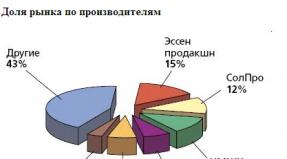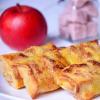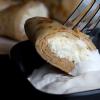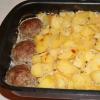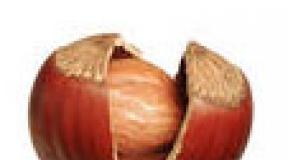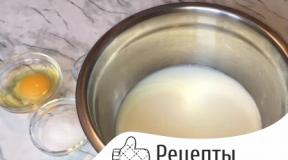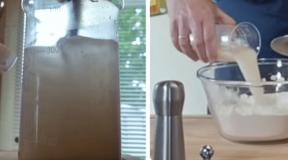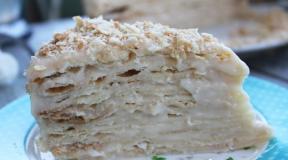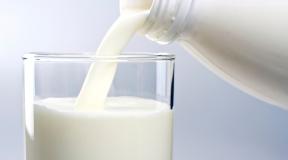How chips are made: from the field to packaging. Potato chips
The topic of today's report is the PepsiCo plant for the production of Lay's potato chips, which has recently opened in the city of Azov, Rostov region. In addition, the plant produces Khrusteam crackers. Let's walk sequentially along the entire production line and consider it in detail.
Chips are believed to have originated over 150 years ago in the United States. Legend has it that at one of the finest American restaurants, a customer (railroad tycoon Vanderbilt) did not like the restaurant's signature dish, "French fries," and returned it to the kitchen, claiming that the fries were too fat. The chef of the restaurant decided to play a trick on the client and cut the potatoes into thinnest slices and fried them in oil and served them to the table. Surprisingly, the client especially liked the dish, and since then a new dish has appeared on the restaurant menu - chips.
Lay's chips have been produced since 1938. Today the Frito Lay company is one of the leading manufacturers of salty snacks both in the world and in Russia. Deliveries of Lay's chips to Russia began in the mid-90s, and in 2002 the first Frito Lay plant was opened in Kashira near Moscow.

Unloading, washing and temporary storage of potatoes
Nine 20-ton trucks with potatoes are unloaded here every day. The potatoes are transported along a conveyor belt to the washer, where recirculated water is used to clean them. There are three such automatic car washes in the world. It is physically impossible to remove the washing process, everything takes place in a closed container. After washing, the potatoes are temporarily stored in bins - special containers, from where, as required, they are fed to production.

Cleaning, sorting and cutting potatoes
Before the potato tubers enter a special cutting machine, inspectors visually inspect the tubers moving along the tape and, if necessary, remove visible defects.

By the way: Not all potatoes are suitable for the production of chips. There are so-called chip potatoes, which are characterized by a high starch content.

All workers periodically undergo a medical examination and have medical records, this is done so that a sick person does not get into production. In addition, before entering the workshop, everyone must wash their hands.

Potatoes are cleaned in batch-type abrasive drums. First, the required amount of potatoes is loaded into the weighing hopper, after which it is unloaded into the drum.

Directly cutting occurs mechanically due to the rotation of the tapered bottom of the drum. Inside the cutting machine there are eight pairs of sharpest blades that cut the tuber into thin slices. Each slice is less than two millimeters thick.

Roasting
After cutting, the potato slices go to the very heart of the chips production line - a frying vat for frying the slices and getting the base chips. This equipment, which has no analogues, was created specifically for the PepsiCo plant and cannot be shown.

Thinly sliced potato slices go into an oil bath, in which they are fried for three minutes at 180 degrees Celsius. Quality oil, like quality potatoes, is the basis of the flavor of the chips.

The recipe was improved at the plant, using a special blend of vegetable oils, including locally produced high-olin sunflower oil, due to which the saturated fat content in the final product was reduced by 25%.

Every day, the plant checks the quality of products. Check both the base chips just out of the oven and the fully wrapped bags.

Adding spices
At this stage, special aromatic and flavoring additives, which are based on salt, are added to the fried potato chips.

Three flavors can be produced on the line at the same time.

Package
By the way: The plant is designed to produce 50 thousand tons of finished products per year. Some fantastic figure, in my opinion.

Ready-made chips are delivered to packaging via three conveyors. Distribution and weighing takes place first.

By the way: Please note that there are very few workers along the entire length of the line. It uses modern equipment that operates in a fully automated mode. In addition, it is important that as few people as possible come into contact with the finished product.

Weighing machines weigh several portions at the same time and calculate the best weight combination, which has the most accurate weight, in order to meet the standard and the weight indicated on the package.

Considering that the net weight of one pack is 28 grams, you can imagine the accuracy of the equipment setting.

The weighed portion is discharged onto the packaging line.

The portion passes the control for the presence of impurities (metal detector) and falls into a bag, which by this time has been prepared by a packaging machine from packaging materials (foil). Before the seam is sealed, food nitrogen is supplied to the bag, which ensures the required shelf life of the product. Weighing and packaging equipment works synchronously, at a speed of up to 80 bags per minute.

The wrapped bag of chips arrives at the operators, who manually fold the bags into cardboard boxes.

Chips are stacked on pallets and transported to the warehouse.


In parallel, there is a line for the production of croutons
The mixture of flour and water is fed into the extruder, heated and thoroughly mixed. Crackers come out of the extruder in the form of strands, which are cut to size with rotating knives.

The next step is to dry the crackers in the oven and go to the seasoning area.

The packaging line is identical to the one that produces the chips.


Weighing takes place in a similar weighing machine, which forms several portions and selects the best combination for sealing into the bag.

Ready-made croutons.

The productivity of one line is 12 tons of finished products per day.

Employees are prohibited from wearing watches and jewelry, manicure and false nails are prohibited, hair must be covered with a net so that nothing gets onto the conveyor.

In addition to the taste and visual compliance of the slices with accepted standards, the quality of the packaging is checked here. The seam should be even and the pack should open in one movement exactly along the seam, without tears.


The staff of the plant. By the way, the production line works around the clock in three shifts.


Exterior of the plant.

Bon Appetit!
The topic of today's report is PepsiCo's plant for the production of Lay "s potato chips, which recently opened in the city of Azov, Rostov region. In addition, the plant produces Khrusteam crackers. Let's walk sequentially along the entire production line and consider it in detail.
Chips are believed to have originated over 150 years ago in the United States. Legend has it that at one of the finest American restaurants, a customer (railroad tycoon Vanderbilt) did not like the restaurant's signature dish, "French fries," and returned it to the kitchen, claiming that the fries were too fat. The chef of the restaurant decided to play a trick on the client and cut the potatoes into thinnest slices and fried them in oil and served them to the table. Surprisingly, the client especially liked the dish, and since then a new dish has appeared on the restaurant menu - chips.
Lay "s chips have been produced since 1938. Today, Frito Lay is one of the leading manufacturers of savory snacks both in the world and in Russia. the first Frito Lay plant was opened in Kashira near Moscow.
Unloading, washing and temporary storage of potatoes
2. Nine 20-ton trucks with potatoes are unloaded here every day. The potatoes are transported along a conveyor belt to the washer, where recirculated water is used to clean them. There are three such automatic car washes in the world. It is physically impossible to remove the washing process, everything takes place in a closed container. After washing, the potatoes are temporarily stored in bins - special containers, from where, as required, they are fed to production.
Cleaning, sorting and cutting potatoes
3. Before the potato tubers enter the special cutting machine, inspectors visually inspect the tubers moving along the tape and, if necessary, remove visible defects.
4. By the way: Not all potatoes are suitable for the production of chips. There are so-called chip potatoes, which are characterized by a high starch content.
5. All employees periodically undergo a medical examination and have medical records, this is done so that a sick person does not go to production. In addition, before entering the workshop, everyone must wash their hands.
6. Peeling of potatoes takes place in abrasive drums of periodic action. First, the required amount of potatoes is loaded into the weighing hopper, after which it is unloaded into the drum.
7. Directly cutting occurs mechanically due to the rotation of the tapered bottom of the drum. Inside the cutting machine there are eight pairs of sharpest blades that cut the tuber into thin slices. Each slice is less than two millimeters thick.
Roasting
8. After cutting, the potato slices go to the very heart of the chips production line - a frying vat for frying the slices and getting the base chips. This equipment, which has no analogues, was created specifically for the PepsiCo plant and cannot be shown.
9. Thinly sliced potato slices go into an oil bath, in which they are fried for three minutes at 180 degrees Celsius. Quality oil, like quality potatoes, is the basis of the flavor of the chips.
10. The recipe was improved at the plant using a special blend of vegetable oils, including locally produced high-olin sunflower oil, which reduced the saturated fat content of the final product by 25%.
11. Every day, the plant checks the quality of products. Check both the base chips just out of the oven and the fully wrapped bags.
Adding spices
12. At this stage, special aromas and flavors, which are based on salt, are added to the fried potato chips.
13. Three flavors can be produced on the line at the same time.
Package
14. By the way: The plant is designed to produce 50 thousand tons of finished products per year. Some fantastic figure, in my opinion.
15. On three conveyors, ready-made chips are delivered to packaging. Distribution and weighing takes place first.
16. By the way: Please note that there are very few workers along the entire length of the line. It uses modern equipment that operates in a fully automated mode. In addition, it is important that as few people as possible come into contact with the finished product.
17. The weighing machine weighs several portions at the same time and calculates the best weight combination that has the most accurate weight in order to meet the standard and the weight indicated on the package.
18. Considering that the net weight of one pack is 28 grams, you can imagine the accuracy of the equipment setting.
19. The weighed portion is discharged onto the packaging line.
20. The portion passes the control for the presence of impurities (metal detector) and falls into the bag, which by this time has been prepared by the packaging machine from packaging materials (foil). Before the seam is sealed, food nitrogen is supplied to the bag, which ensures the required shelf life of the product. Weighing and packaging equipment works synchronously, at a speed of up to 80 bags per minute.
21. The wrapped bag of chips is delivered to the operators, who manually fold the bags into cardboard boxes.
22. Boxes of chips are stacked on pallets and transported to the warehouse.
There is a parallel line along Production of croutons
24. A mixture of flour and water is fed into the extruder, heated and thoroughly mixed. Crackers come out of the extruder in the form of strands, which are cut to size with rotating knives.
25. The next step is to dry the crackers in the oven and go to the seasoning area.
26. The packaging line is identical to the one that produces the chips.
28. Weighing takes place in a similar weighing machine, which forms several portions and selects the best combination for sealing into the bag.
29. Ready-made croutons.
30. Productivity of one line - 12 tons of finished products per day.
31. Employees are prohibited from wearing watches and jewelry, manicure and false nails are prohibited, hair must be covered with a net so that nothing gets on the conveyor.
32. In addition to the taste and visual compliance of the slices with accepted standards, the quality of the packaging is checked here. The seam should be even and the pack should open in one movement exactly along the seam, without tears.
34. The staff of the plant. By the way, the production line works around the clock in three shifts.
36. Exterior of the plant.
37. Bon appetit!
Photos
Yasya Vogelhardt
The PepsiCo corporation catalog contains about 40 different brands: drinks ("Ya", Lipton Ice Tea, "Aqua Minerale", Pepsi, J7, Mirinda), dairy products ("Merry Milkman", "Miracle", "Imunele"), baby food ("Zdrayvery", "Agusha") and not only. At the Frito Lay plant in Kashira near Moscow, the international giant produces snacks - Lay's and Cheetos chips, Khrusteam crackers (another snack plant is located in Azov). A year ago, The Village visited the PepsiCo production facility near Moscow and saw. This time we went to the Frito Lay factory to learn how chips are made.
Chips production
The base of the chips is good potatoes. The company estimates that four kilograms of potatoes make a kilogram of chips. The plant purchases potatoes mainly from Russian suppliers from the Moscow and Tula regions. Employees say that not every potato variety is suitable for making chips. The fruits should be dense in structure and contain a minimum amount of sugar, there are only seven such varieties.
Potatoes are delivered to production in trucks, which can carry up to 20 tons of product at a time. Arriving at the factory, the machine pours the potatoes into the receiving container. The employee examines the potatoes to see if they are good for chips. If the tubers have a lot of green or black spots, such a batch can be sent back to the supplier.
Frito Lay Factory
Snack maker
LOCATION:
Kashira, Moscow region
OPENING DATE: 2002 year
EMPLOYEES: 1,000 people
PLANT AREA: 25 ha
lays.ru




The potatoes are transported through a conveyor system to the bin bins, where the first stage of sorting takes place - cleaning from sprouts and soil. The potato tuber should be from four to nine centimeters in diameter, so very small tubers are rejected, and the machine throws them into a separate bag. There are only eight such bins at the plant, each of them can hold 40 tons of potatoes, which are completely processed in four hours.
From the bins, the potatoes go to the next section, where the potatoes are washed and separated from foreign dirt, stones and chips. Cleaning takes place in a large container - a drum is installed inside it, onto which clean water is supplied with the help of nozzles. Then they get rid of the peel using a round-shaped installation: getting into it, the tubers rotate around the rough walls, and the peel is washed off. This happens in just 90 seconds.




After that, the potatoes are washed again in special baths to avoid getting the slightest particles of the peel after peeling. Then it is sorted by size, and a grader is waiting for especially large tubers - in it, the potatoes are cut into several pieces using round knives. Particularly large potatoes are then cut in half. The sorted tubers go to the inspection table - employees monitor the quality of the product, manually cut pieces that have been missed by the machine or discard unsuitable ones.
After sorting the potatoes through the conveyor system, they go to the next section - the slicer, which cuts the tubers into thin slices: the permissible thickness of one slice is no more than 1.3 millimeters. The slicer has five "heads", inside of which there are drums with knives - slicers. For the preparation of corrugated chips, the knives are changed to wavy ones. Then the slices are transferred with a stream of water to the quick wash stage, where they are washed again - this procedure is needed in order to get rid of excess starch. The starchy water goes to a special installation, where the liquid is evaporated, getting dry starch. His company collects and sells.




Finally, the slices go to the frying stage, which takes place in a closed container at a temperature of 180 degrees. Chips are in the fryer for only three minutes - during this time, each slice is immersed in a hot mixture of vegetable oils until cooked. At the exit from the apparatus there are moisture meters, which check if the potatoes have fried enough. If suddenly the potatoes turn out to be raw and poorly cooked, the system will give a signal to the operator, and he will be forced to dispose of the batch. The next stage of the check is optical sorting, during which chips with defects are “shot off” with the help of nozzles. Only then is the product sent to the spice application area.
The chips are fed into a large rotating drum, inside of which the seasoning is sprayed. Due to the fact that the slices are buttery, the seasoning fits well on each slice and sticks to it. Herbs (dried parsley, onion or dill), spices, flavorings and salt are used as seasonings in production. All these ingredients are mainly purchased in Russia; they are delivered to the conveyor in a mixed form. The company says that for some flavors - for example, garlic, tomato and paprika - a powder is applied to the chips, which consists of chopped vegetables. Monosodium glutamate and flavors are also used to enhance the flavor. The company clarifies that all flavorings are food and are identical to natural products. “All of this is indicated in the composition on the pack,” the employees add.
Eight different flavors of chips can be made in production at the same time. Some flavors are produced only for Russia - for example, "Porcini mushrooms with sour cream", "Lightly salted cucumbers" and "Crab". It is not the first year that the most popular taste among Russians is Young Green Onion.
When seasoning is applied, the process of making chips ends. The slices first go to the weigher, and then the mass is fed into an open bag that looks like a sleeve. Former fills the bag with nitrogen and seals it: this way the product can be stored for a long time and not deteriorate. The cooking time for one batch of chips is a little less than an hour. After packing, the packages are folded into boxes and sent to the warehouse, from where they go to stores in Russia and the CIS countries.








The topic of today's report is the PepsiCo plant for the production of Lay's potato chips, which has recently opened in the city of Azov, Rostov region. In addition, the plant produces Khrusteam crackers. Let's walk sequentially along the entire production line and consider it in detail.
Chips are believed to have originated over 150 years ago in the United States. Legend has it that at one of the finest American restaurants, a customer (railroad tycoon Vanderbilt) did not like the restaurant's signature dish, "French fries," and returned it to the kitchen, claiming that the fries were too fat. The chef of the restaurant decided to play a trick on the client and cut the potatoes into thinnest slices and fried them in oil and served them to the table. Surprisingly, the client especially liked the dish, and since then a new dish has appeared on the restaurant menu - chips.
Lay's chips have been produced since 1938. Today the Frito Lay company is one of the leading manufacturers of salty snacks both in the world and in Russia. Deliveries of Lay's chips to Russia began in the mid-90s, and in 2002 the first Frito Lay plant was opened in Kashira near Moscow.

Unloading, washing and temporary storage of potatoes
Nine 20-ton trucks with potatoes are unloaded here every day. The potatoes are transported along a conveyor belt to the washer, where recirculated water is used to clean them. There are three such automatic car washes in the world. It is physically impossible to remove the washing process, everything takes place in a closed container. After washing, the potatoes are temporarily stored in bins - special containers, from where, as required, they are fed to production.

Cleaning, sorting and cutting potatoes
Before the potato tubers enter a special cutting machine, inspectors visually inspect the tubers moving along the tape and, if necessary, remove visible defects.

By the way: Not all potatoes are suitable for the production of chips. There are so-called chip potatoes, which are characterized by a high starch content.

All workers periodically undergo a medical examination and have medical records, this is done so that a sick person does not get into production. In addition, before entering the workshop, everyone must wash their hands.

Potatoes are cleaned in batch-type abrasive drums. First, the required amount of potatoes is loaded into the weighing hopper, after which it is unloaded into the drum.

Directly cutting occurs mechanically due to the rotation of the tapered bottom of the drum. Inside the cutting machine there are eight pairs of sharpest blades that cut the tuber into thin slices. Each slice is less than two millimeters thick.

Roasting
After cutting, the potato slices go to the very heart of the chips production line - a frying vat for frying the slices and getting the base chips. This equipment, which has no analogues, was created specifically for the PepsiCo plant and cannot be shown.

Thinly sliced potato slices go into an oil bath, in which they are fried for three minutes at 180 degrees Celsius. Quality oil, like quality potatoes, is the basis of the flavor of the chips.

The recipe was improved at the plant, using a special blend of vegetable oils, including locally produced high-olin sunflower oil, due to which the saturated fat content in the final product was reduced by 25%.

Every day, the plant checks the quality of products. Check both the base chips just out of the oven and the fully wrapped bags.

Adding spices
At this stage, special aromatic and flavoring additives, which are based on salt, are added to the fried potato chips.

Three flavors can be produced on the line at the same time.

Package
By the way: The plant is designed to produce 50 thousand tons of finished products per year. Some fantastic figure, in my opinion.

Ready-made chips are delivered to packaging via three conveyors. Distribution and weighing takes place first.

By the way: Please note that there are very few workers along the entire length of the line. It uses modern equipment that operates in a fully automated mode. In addition, it is important that as few people as possible come into contact with the finished product.

Weighing machines weigh several portions at the same time and calculate the best weight combination, which has the most accurate weight, in order to meet the standard and the weight indicated on the package.

Considering that the net weight of one pack is 28 grams, you can imagine the accuracy of the equipment setting.

The weighed portion is discharged onto the packaging line.

The portion passes the control for the presence of impurities (metal detector) and falls into a bag, which by this time has been prepared by a packaging machine from packaging materials (foil). Before the seam is sealed, food nitrogen is supplied to the bag, which ensures the required shelf life of the product. Weighing and packaging equipment works synchronously, at a speed of up to 80 bags per minute.

The wrapped bag of chips arrives at the operators, who manually fold the bags into cardboard boxes.

Chips are stacked on pallets and transported to the warehouse.


In parallel, there is a line for the production of croutons
The mixture of flour and water is fed into the extruder, heated and thoroughly mixed. Crackers come out of the extruder in the form of strands, which are cut to size with rotating knives.

The next step is to dry the crackers in the oven and go to the seasoning area.

The packaging line is identical to the one that produces the chips.


Weighing takes place in a similar weighing machine, which forms several portions and selects the best combination for sealing into the bag.

Ready-made croutons.

The productivity of one line is 12 tons of finished products per day.

Employees are prohibited from wearing watches and jewelry, manicure and false nails are prohibited, hair must be covered with a net so that nothing gets onto the conveyor.

In addition to the taste and visual compliance of the slices with accepted standards, the quality of the packaging is checked here. The seam should be even and the pack should open in one movement exactly along the seam, without tears.


The staff of the plant. By the way, the production line works around the clock in three shifts.


Exterior of the plant.

Bon Appetit!
Don't be fooled if someone says they don't like chips. Yes, the product is high in calories and is contraindicated for dietetic food lovers, but this does not apply to the general population. Everybody loves chips! Kids love crunchy treats, and adults can't imagine other snacks with beer. Making chips at home is a special pleasure. First of all, the process itself is interesting, and tasting the results usually brings the whole family together at one table.
Features of cooking chips
It is not difficult to prepare such a delicacy on your own. Homemade chips, in contrast to store-bought ones, containing preservatives, flavors and other not harmless additives, are completely harmless to the body. They contain only natural products: potatoes, vegetable oil and salt. Cooking does not require special devices, an oven or microwave is enough, and in the absence of such, an ordinary frying pan will do. Follow the simple requirements, and the crunch of potato slices will delight everyone, without exception.
- Not only taste is important, but also aesthetic. Therefore, set aside the "defective" (eyes, irregularities) source material, and leave even potatoes for processing.
- By rinsing the slices with cold water, you can reduce the starch content so that the chips will not stick together during the frying process.
- Place the cooked potatoes on a plate with baking paper or flour on top of the dish.
- You can add a little piquancy to the flavor of homemade chips by adding paprika, spices, or other spices of your choice.
Potato chips in the oven
Required products: 5 potatoes, salt, spices, 2 tbsp. l. vegetable oil. Cut the peeled, washed potatoes so that extremely thin slices are obtained. Sprinkle them with vegetable oil, then stir with your hands. Cover a baking sheet with baking paper or parchment, grease with oil. In the meantime, preheat the oven to 190 degrees. Arrange the potato slices in one layer and send to bake until tender. Put the finished chips on a dish, salt and sprinkle with spices. The result is golden in appearance and crunchy in taste.
Microwave potato chips
We process potato tubers as in the previous method. Place oiled paper on a microwave plate and distribute the potato slices, observing the spacing between them. Smear the top with vegetable oil and put in the oven for three minutes, while setting high power. Salt ready-made chips.

For one kilogram of tubers, you will need about a liter of oil. Salt and seasoning as usual. It is convenient to cook at home in a deep frying pan (you can use it in a saucepan). Also prepare a paper towel, a colander, and a flat plate. Rinse the potatoes with cold water. Throwing in a colander, you should shake off the remaining drops, dry the slices, and after that put them in oil (should boil). The cooking process in a pan is quick, just have time to take out the slices fried until golden brown. The finished chips are laid out on a towel, which will absorb the excess oil. Spread out on a plate, sprinkle with salt and the rest of the seasonings. Cook the remaining potatoes, adding oil.
Deep Fryer Potato Chips
Deep fat fryers will have better luck when it comes to cooking times. And the dish itself turns out to be tastier, but there are negative aspects. Potatoes absorb a lot of oil, and chips prepared in this way will be fatty, and doctors and nutritionists do not recommend excessive consumption of such food. The frying process is the same as in a skillet, and the slices should be thinner than usual.
A multicooker can serve as an alternative to a deep fryer, if you additionally purchase special nets used for cooking in boiling oil.
Chips - neoclassic
Chip makers have long ago departed from the classic version, and crispy potato counterparts have appeared on store shelves. The consumer does not always think about what a particular product is made of, the main thing is that it satisfies the taste. The assortment for this is quite diverse: the aroma of bacon, jellied meat, mushrooms, cheese, but the most attractive is the crunch. So why not experiment at home.

From lavash
For cooking, you will need the following products:
- thin pita bread;
- vegetable oil (preferably olive);
- Dill;
- three cloves of garlic;
- salt.
Chop finely washed dill, mix with salt and crushed garlic. Lavash pieces (in the shape of chips) grease with the prepared mixture, put on a baking sheet, place in the oven. Drying requires a temperature of 200 degrees and only five minutes of time. Ready!
For those who like fatty chips, add some mayonnaise or sour cream to the mixture.
Cheese
Any cheese is rubbed on a fine grater and laid out for baking on a deck in small portions. Be sure to leave a distance between the pieces, otherwise you can get one large cake, since the product tends to spread when melted. Set the oven to 160 degrees and take out the chips after about four to five minutes. Refrigerate and taste.
You can use this recipe if you have a stale piece of cheese. Do not throw it away, it is quite suitable for preparing such a hearty snack. And one more piece of advice for housewives. Add ham, garlic, any greens for an unmatched flavor.
Warning! Do not be distracted for a long time, as the cheese melts quickly, and if you miss the moment, it will burn.
Mashed potatoes
The unusual taste of chips according to this recipe will be lucky to be appreciated only by those who have a waffle iron.
Ingredients:
- 5 potatoes;
- 1 egg;
- 5 tbsp. l. flour;
- a third of a glass of milk;
- salt, spices;
- vegetable oil, with the exception of olive.
Cook regular puree, cool slightly, pour in milk, add flour and an egg. Mix thoroughly, the ideal mass is obtained using a blender. The consistency should be sparse, but not spread. Pour in salt, spices (greens, mushrooms if desired).
Grease a hot waffle iron, put 1 tbsp. l. potato dough, smooth over the surface and bake for no more than 30 seconds, otherwise it will burn. Gently remove the finished chips using a knife.
Onion
Homemade chips made from ordinary onions have a peculiar taste. The process is laborious, but the end result is excellent. First, prepare the batter by beating two eggs and flour. Season with salt, pepper, or other spices to taste. The dough should be liquid, and you can increase it in volume by adding a little mineral water.

The onion is cut into circles, an average of four millimeters thick, and disassembled into separate rings. Dip each part in batter and put in a pan with well-heated oil. Fry on both sides, then lay out on a towel, as is the case with the potato version. Finished chips should have a nice golden color. If you have some more time to spare, add a quick sauce to the onion crisps. To do this, chop dill, green onions, peppers and mix with sour cream.
From meat
At first glance, this recipe will seem complicated, but only in time. Be patient, and the process itself will give you pleasure. Cut the meat into slices two millimeters thick and in sizes of your choice. Beat off each piece as thin as possible. Next, make the marinade. Crush a few cloves of garlic, add 3 tbsp. l. sugar, a little soy sauce, 2 tbsp. l. vinegar, parsley and any spices. Pour the meat with the resulting marinade and refrigerate for five hours. Heat the oven to one hundred degrees (minimum mode). We spread the pieces of meat on a baking sheet covered with food foil and set off to bake. It will take thirty to forty minutes until all the moisture has evaporated.
The proposed recipes are the most popular, but inventive housewives have gone further. Especially those who like to crunch diet food. Chips are prepared at home from any vegetables: zucchini, carrots, blue ones, moreover, without the use of oil. The technology is similar to cooking in the microwave, and the holding time is about ten minutes. Sprinkle the finished multi-colored chips with dill, garlic, parsley, mixed with fine salt. This homemade seasoning is completely harmless.
But even this does not limit human capabilities. Chips can be one of the dessert options.
Sweet fruit slices
Divide pears, apples into thin slices. Make a syrup from 0.5 kg of sugar and 0.5 liters of water and boil the fruit in it for five minutes. Then take out and dry in the oven for about five hours. Fruit chips are sweet and crunchy.
The process can be simplified by eliminating the syrup. Then dry the fruit slices in the usual way - and no additional material and time costs. This method will allow you to save semi-finished products for the preparation of compotes in the winter season.
So, there are a lot of recipes and a variety of products, but making chips at home does not take any rush, so do it when you have free time.
Video: delicious homemade chips


